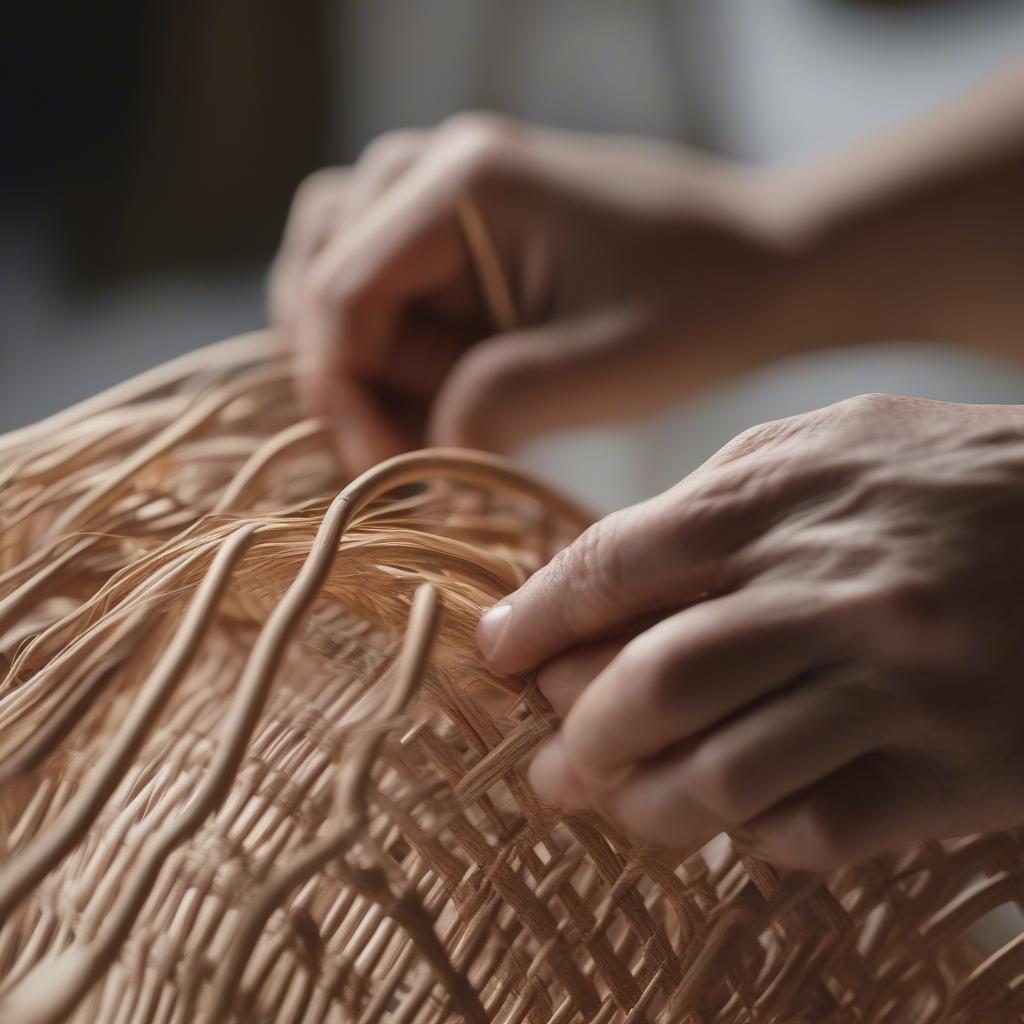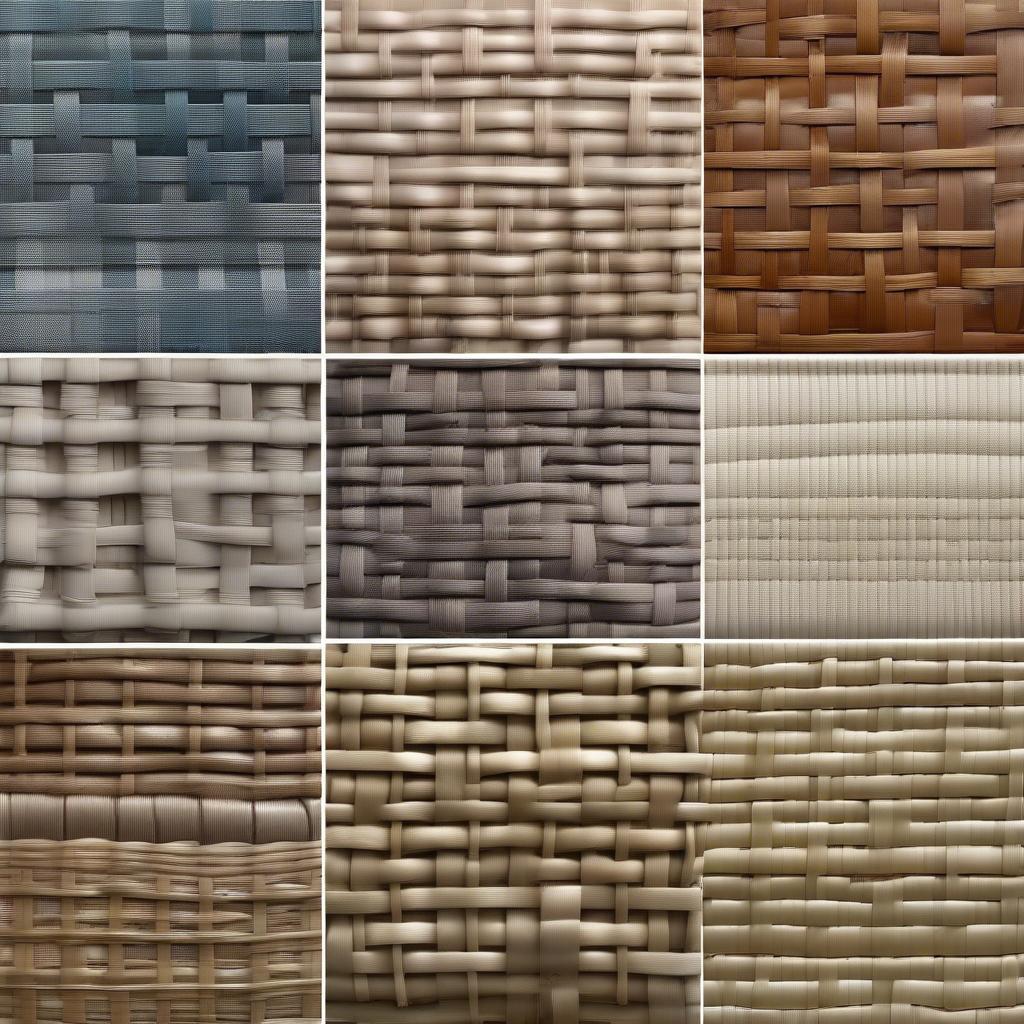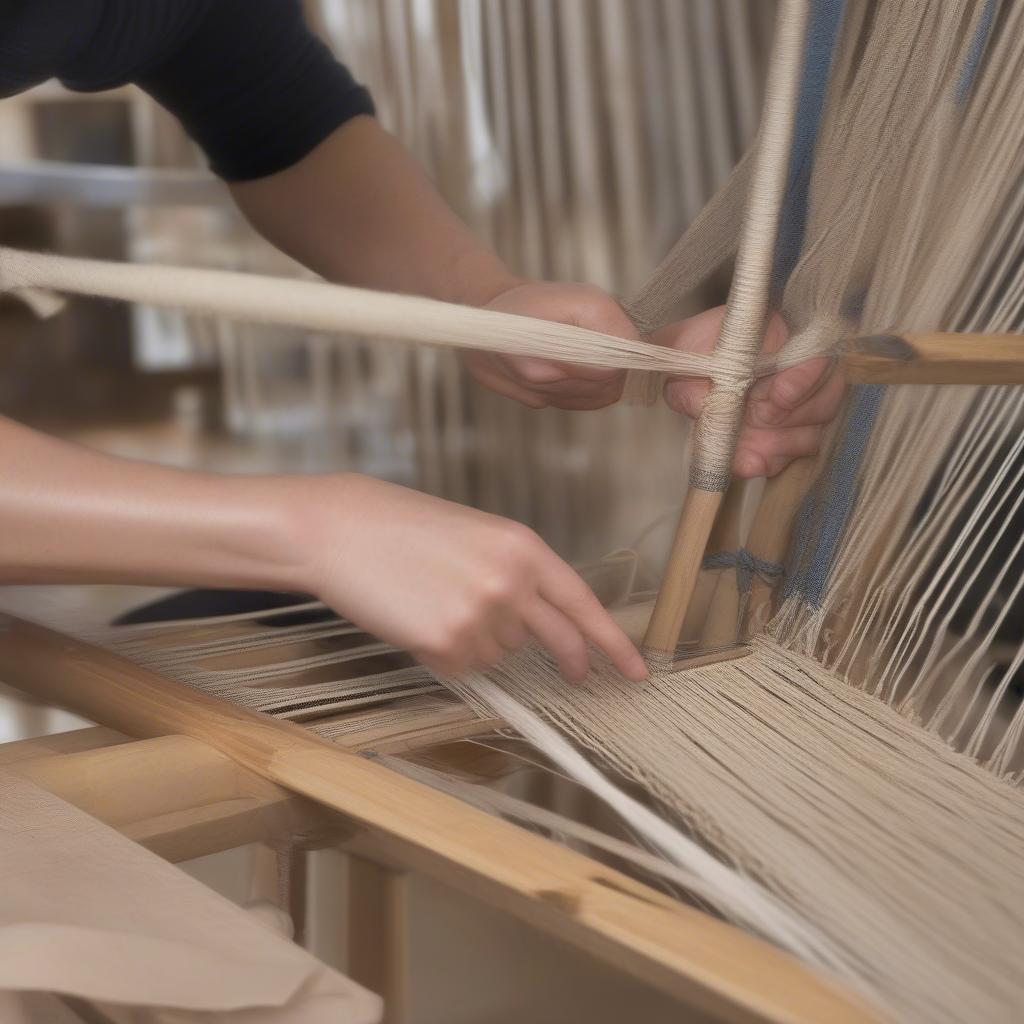Weave Chair
Weaving Chair Seat: A Comprehensive Guide
Weaving a chair seat is a rewarding craft that blends traditional techniques with modern design. Whether you’re restoring a family heirloom or adding a unique touch to your home decor, understanding the art of weaving a chair seat opens up a world of creative possibilities. This guide explores various techniques, materials, and tips to help you master this craft.
 Weaving a chair seat with natural rattan material
Weaving a chair seat with natural rattan material
Choosing the Right Materials for Your Weaving Chair Seat
The material you choose significantly impacts the durability, comfort, and aesthetic of your woven chair seat. Natural fibers like rattan and rush offer a classic look and feel, while synthetic options like plastic weave provide weather resistance and durability. weave chair with rattan splint provides a detailed look at using rattan splint specifically. Understanding the characteristics of each material will help you select the best option for your project.
Natural Fibers: Rattan, Rush, and More
Natural fibers bring an organic warmth to any space. Rattan, known for its flexibility and strength, is a popular choice for intricate weaving patterns. Rush, a more rigid material, is ideal for simpler designs and offers excellent durability. Other natural fibers, such as seagrass and paper cord, also offer unique textures and aesthetics.
Synthetic Materials: Plastic Weave and Beyond
For outdoor furniture or high-traffic areas, synthetic materials provide excellent durability and easy maintenance. Plastic weave, available in various colors and textures, resists fading and mildew. While not as traditional as natural fibers, synthetic options offer practical benefits for specific applications.
Weaving Techniques for Chair Seats
From the simple elegance of basket weave to the complex beauty of herringbone, a variety of weaving techniques can be applied to chair seats. Each technique creates a distinct visual texture and requires varying levels of skill. herringbone chair weave offers a closer look at this specific technique. Experimenting with different techniques allows you to personalize your chair and achieve the desired aesthetic.
Basket Weave: A Classic Choice
Basket weave, also known as plain weave, is a fundamental technique that involves interlacing the weaving material over and under perpendicular strands. This simple yet effective technique creates a sturdy and visually appealing seat. You might be interested in learning more about basket weave chair seat.
Herringbone Weave: A Touch of Elegance
Herringbone weave, named after its resemblance to fish bones, creates a distinctive V-shaped pattern. This technique adds a touch of sophistication to your chair and is perfect for showcasing the natural beauty of materials like rattan.
 Examples of various chair seat weaving patterns, including basket weave and herringbone
Examples of various chair seat weaving patterns, including basket weave and herringbone
Getting Started: Preparing Your Chair Frame
Before you begin weaving, proper preparation of the chair frame is crucial. Ensure the frame is sturdy and free of any loose parts. Sand down any rough edges to prevent snags and damage to your weaving material. Applying a sealant to the frame can protect it from moisture and extend its lifespan.
Measuring and Cutting Your Weaving Material
Accurate measurements are essential for a successful weaving project. Measure the dimensions of the chair seat opening and add extra length to account for the weaving process. Cut the weaving material accordingly, ensuring clean and even cuts to maintain a professional finish.
Weaving Your Chair Seat: Step-by-Step Guide
Begin by securing the starting end of your weaving material to the chair frame. Following your chosen weaving pattern, meticulously interlace the strands over and under the frame. Maintain consistent tension to create a taut and even surface. As you progress, check the underside of the seat to ensure the weave is neat and secure. rope weaving outdoor chair price offers insights into pricing for different materials.
 Demonstrating the process of securing the weaving material to the chair frame
Demonstrating the process of securing the weaving material to the chair frame
Finishing Touches
Once the weaving is complete, secure the ends of the weaving material to the frame. Trim any excess material and tuck the ends neatly underneath the weave. Apply a finishing sealant to protect the woven seat from wear and tear.
“A beautifully woven chair seat not only enhances the chair’s aesthetic but also speaks volumes about the craftsman’s skill and dedication,” says renowned furniture designer, Anya Sharma. “Choosing quality materials and mastering the techniques is key to creating a piece that will be treasured for years to come.”
Conclusion
Weaving a chair seat is a fulfilling craft that allows you to create a functional and beautiful piece of furniture. By selecting the right materials, mastering the techniques, and paying attention to detail, you can transform an ordinary chair into a unique and cherished item. Start your weaving journey today and experience the joy of creating something beautiful with your own hands. Remember, plastic weave chair manufacturers can provide a variety of options if you’re considering synthetic materials.
FAQ
- What is the best material for weaving a chair seat?
- How do I measure for a woven chair seat?
- What are the different weaving techniques for chair seats?
- How do I secure the weaving material to the chair frame?
- How do I finish a woven chair seat?
- Where can I find supplies for weaving a chair seat?
- How long does it take to weave a chair seat?
For further support, please contact our Hotline: +84 388 951 999, or visit us in Hanoi, Vietnam, or Tech Avenue, Suite 12, San Francisco, CA 94105, USA. We have a 24/7 customer service team ready to assist you.
